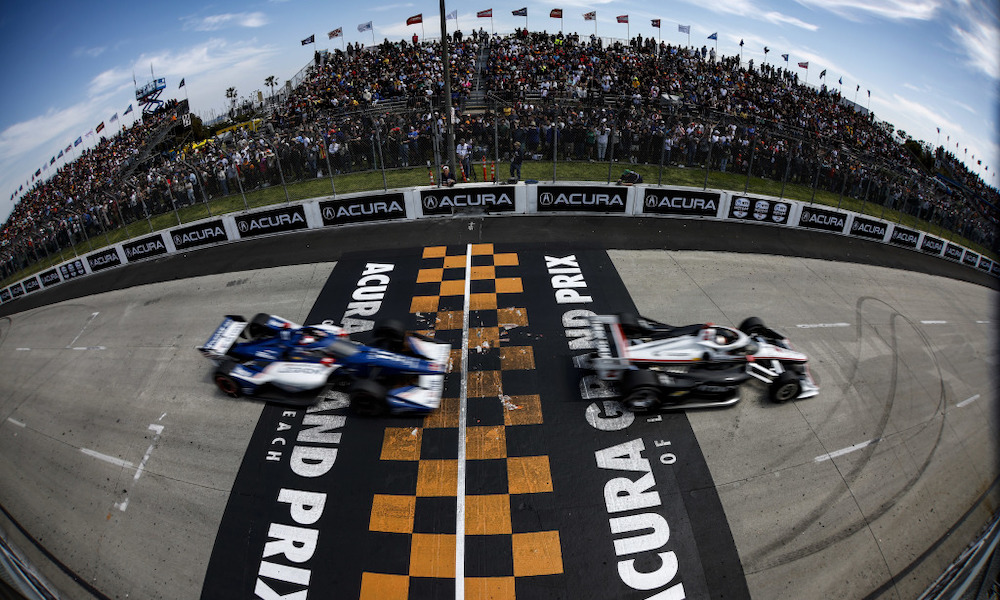Penske Entertainment CEO Mark Miles and the rest of the senior leadership in charge of the NTT IndyCar Series continue to work on developing their version of NASCAR’s charter system, which is similar to the old CART IndyCar franchise structure where teams had a commodity — an asset with commercial value — associated with each of their IndyCar entries that could be purchased or sold.
Since its formation in 2005, IndyCar’s Leaders Circle has functioned as the only business link between the series and its teams ,where the top 22 cars in the entrants’ standings are awarded guaranteed prize money for the following season. But to date, no system has been established to give team owners a formal stake in owning the right to participate in IndyCar as is common in other racing series, and major stick and ball sports leagues.
[lawrence-auto-related count=3 category=1408]
Although nothing is imminent in launching IndyCar’s take on charters and franchises, talks are evolving on the matter and a wide array of questions need to be answered before the unnamed business structure is launched in 2025 or some point afterwards.
“Maybe we ought to call it the ‘Leaders Circle Membership,’” Miles told RACER. “As far as I know, the Leaders Circle is kind of our thing. Our people know what it is, currently suggests a certain number of participants in it.
“The idea is to create, whether it’s through contracts or some other system of agreements, for the selected teams that obviously are the stellar teams that have had substantial commitments to IndyCar racing and been successful, for them to have more of a property right, more of an asset value, so that if the day comes when they want to get out, they have something they can sell besides their equipment in their shop.”
Penske Entertainment engaged its team owners on the topic in August during the series’ second visit to the Indianapolis Motor Speedway road course and took more steps on shaping the ‘Leaders Circle Membership’ in a recent huddle with its paddock.
“We had another round of conversations almost a month ago,” Miles said. “We spoke to the owners of all the teams individually. We’ve floated some options and ideas where you could choose which ones you liked or didn’t like, and I think we’re still a way off from having a clearer consensus that we feel like we need to pull the trigger on. There’s lots of questions.
“Least of which is what you call it. It’s how many cars are in, when were those cars selected? Do they pay? And if so, how much is their investment to get into this this group? What are the conditions for sale? And there’s probably a dozen others that really have to be worked through. So we continue to float thoughts about those ideas, some of those thoughts we hear from other team owners. And it’s not a concept that I see going away, but I don’t think it’s one that’s going to be locked in based on this year’s results, or we’ll see how the relevance of 2024.”
Having watched the torturous process IndyCar team owner Michael Andretti and Dan Towriss, his new partner in the Andretti Global, have gone through in attempting to enter Formula 1, Miles wants IndyCar to be mindful of how it establishes the series’ future entry access program.
“There are just a lot of considerations,” he said. “I would say the bid in the ask is [between] 22 and 27 [entries]; 22 is the traditional [amount of] Leaders Circle [contracts], and 27 is the most we can accommodate on the grid at our races outside of Indianapolis.
“So we’ve had 27 full-time [entries], as of late. So we’ll see about that. Listen, I have all the respect in the world for Dan Towriss and what he’s trying to do with Michael in creating the Andretti Global brand. They want to create something in my mind akin to the Penske Corporation where all their businesses can benefit by the activities and the global reach and the success of what they choose to do in sports. So the strategy is pretty clear.
“I do think their situation is an example where trying to create this kind of asset value for the teams can get very complicated. We’ve benefited, whether it was Hulman George, or Penske Corp, by single ownership. We have a responsibility; we have to protect the integrity of the sport. But it’s not very complicated. If we think something really needs to be done, for sure we’re going to talk with the stakeholders, then we can decide.
“I do think the Andretti Global case with F1 is a bit of an example of how when all the stakeholders are involved in the governance, it can get pretty hard to settle.”
The biggest driver behind IndyCar’s entry ownership initiative remains the same — Miles’ boss.
“Roger Penske is the owner of the IndyCar Series, but he’s also got a little bit of a track record as an owner of a [NASCAR] team,” Miles said. “And I think he likes the idea. It’s been useful in other examples. We think we can come up with a way that makes it useful for us. There’s just lots of questions to ask.”
